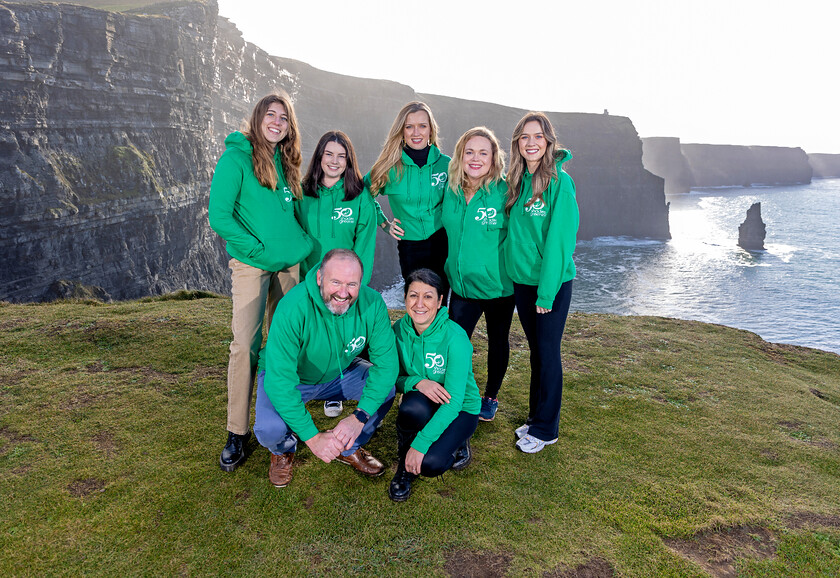SDG 11 - Sustainable Cities and Communities - Sustainable Development
Aug 21, 2023UN SDG 11 main goal is to make cities and human settlements inclusive, safe, resilient, and sustainable.
The global population is continuously increasing, and it's expected that by 2050 70% of the global population will live in cities. Therefore, it's urgent that we rethink our current urban planning so we can all live in a sustainable and inclusive way. In today's blog, we will analyse how far we are from this target, and we will explore how it is living in a sustainable city.
The way we live now.
To put in context the lifestyle situation, let's look at some impactful data:
- Nowadays cities account for more than 70% of global house emissions.
- In 2022, 99% of the world’s urban population lived in areas that exceeded the air quality guidelines set by the World Health Organization (WHO).
- Between 2015 and 2030, annual passenger traffic globally is projected to increase by 50%, and the number of cars on the road will likely double.
This picture from the Swedish artist Karl Jilg captures the way of living in “car-centric” cities:

As cities grow, municipal solid waste problems increase: In 2022, only 55% was being managed in controlled facilities.
In 2020, there were more than 1.05 billion people living in slums worldwide. A slum is a group of individuals living under the same roof, lacking one or more of the following conditions: access to improved water, access to improved sanitation, sufficient living area, durability of housing, and security tenure:

Source: Our World in Data
The housing crisis is one of the major problems of today's society. For example, in Ireland property prices have almost doubled since 2013 and the number of homeless people keep rising.
Finally, living in today’s poorly designed cities is associated with a nearly 40% increase in mood disorders and a more than 20% increase in anxiety disorders
What would the world look like if SDG 11 was fully implemented?
Let's imagine how a sustainable city would look like:
Firstly, this city would be green; this means that automobiles traffic would be regulated, giving priority to public transport and bike paths and establishing limits to create large pedestrian areas free of pollution and noise. You wouldn´t need to worry about a car, because you would have basic services such as hospitals, groceries, schools and libraries in less than 15 minutes by foot. In addition, green spaces would be at the core of every neighbourhood and the city energy would come from renewable sources, with solar panels and wind turbines installed in the rooftops. This way of living would promote social interaction, enhance urban landscape and improve human health.
The city system would also be based on circular economy strategies. For example, new structures would be made mostly from green concrete and recycling initiatives would reduce waste generation. City planning would also focus on climate resilience, being able to respond to climate disasters.
Finally, the urban plan would be inclusive, this means that there would be space and affordable rent prices for everyone. This can be done by guaranteeing that there´s no empty houses, increasing the density of housing near the centres or creating more buildings on the edges.

In conclusion, sustainable cities would be more environmentally friendly, contributing to mitigate climate change, would boost our quality of life, reducing mental and physical health problems, and would empower societies, strengthing communities.
Are we on track to achieve SDG 11?
But are these cities science fiction? Of course not! The best news is that there are some cities that have already started implementing all these strategies.
Oslo, Copenhague or Stockolm have been ranked as the most sustainable cities globally because they have electric buses, thousands of cycle lanes, and multiple green spaces, but most importantly, their green initiatives have improved their citizens wellbeing and quality of life.
China has also in its plans to construct up to “285 eco-cities”. Check this interesting project they have already invested in: the “Forest City”, where all buildings will be covered in plants and will run on renewable energy.

What can we do to assist this sustainable development goal?
It´s clear that this goal can only be achieved with the investment of governments in sustainable urbanistic initiatives. Future regulations and green financing will contribute to achieve this target, but also individuals can contribute:
- Vote - Elect the leaders in your local community that plan to invest in green initiatives.
- Commute in a sustainable way – bike, walk or take public transport, shop and eat locally to avoid long distances, and take the car only if necessary.
- Take care of public spaces. – don’t leave rubbish behind, respect neighbours, and create a sense of community!
- Stay informed. Follow your local news and educate yourself on sustainable cities.
- Finally, businesses need to evaluate their ESG metrics and learn how to manage and improve them, as ESG are directly linked to the UN SDG Goals.
Lead the Transition to Sustainable Communities
Do you want to help shape resilient, inclusive, and sustainable cities? The ESG Leader Programme provides you with the tools to integrate ESG strategies into your organization, supporting urban sustainability and global progress toward SDG 11. Don’t miss your chance—enroll today for the next cohort!
Thank you for reading today.
The FSG Team 💚

Stay connected with news and updates!
Join our mailing list to receive the latest news and updates from our team.
Don't worry, your information will not be shared.
We hate SPAM. We will never sell your information, for any reason.

